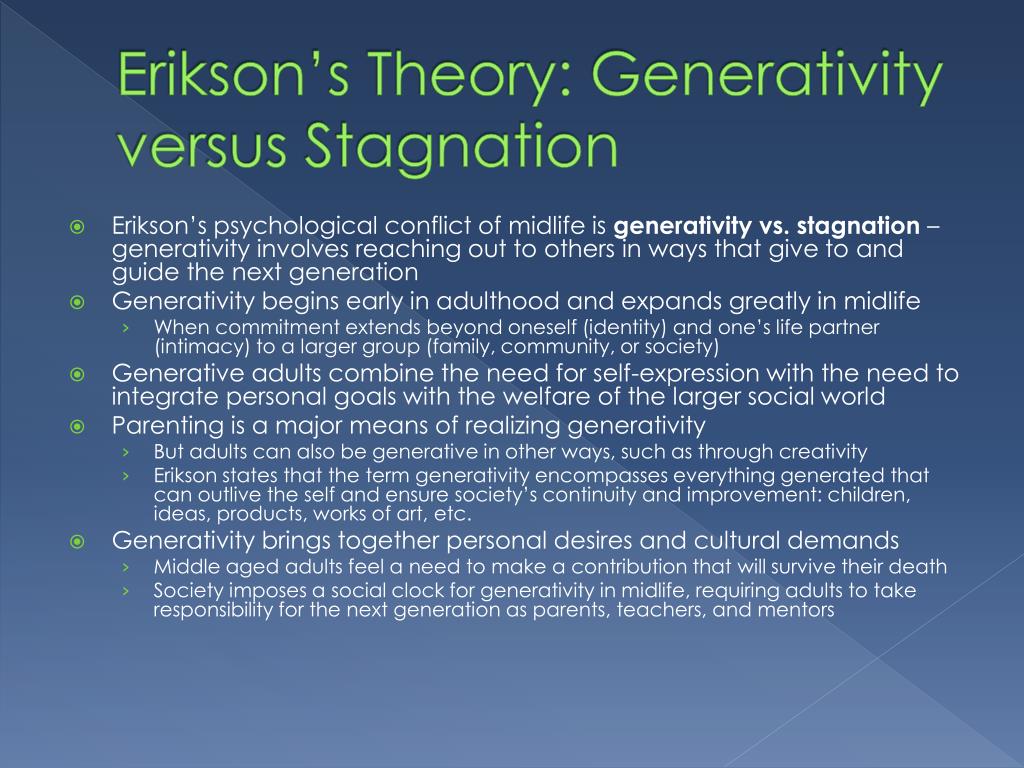
PPT Emotional and Social Development in Middle Adulthood PowerPoint
Generativity vs. Stagnation Ego Integrity vs. Despair Support and Criticism References Erikson maintained that personality develops in a predetermined order through eight stages of psychosocial development, from infancy to adulthood.
:max_bytes(150000):strip_icc()/generativity-versus-stagnation-2795734_final-8464025771694e779bc84be73010b6f2.jpg)
Generativity vs. Stagnation in Psychosocial Development
This stage includes the generation of new beings, new products, and new ideas, as well as self-generation concerned with further identity development. Erikson believed that the stage of generativity, during which one established a family and career, was the longest of all the stages.

Generativity vs. Stagnation Navigating Your Psychosocial Development
Generativity vs. stagnation is the seventh stage of Erik Erikson's theory of psychosocial development. This stage takes place during middle adulthood, between the approximate ages of 40 and 65. It comes before the eighth and final stage of development in Erikson's theory, which is integrity vs. despair . During this stage, middle-aged adults.
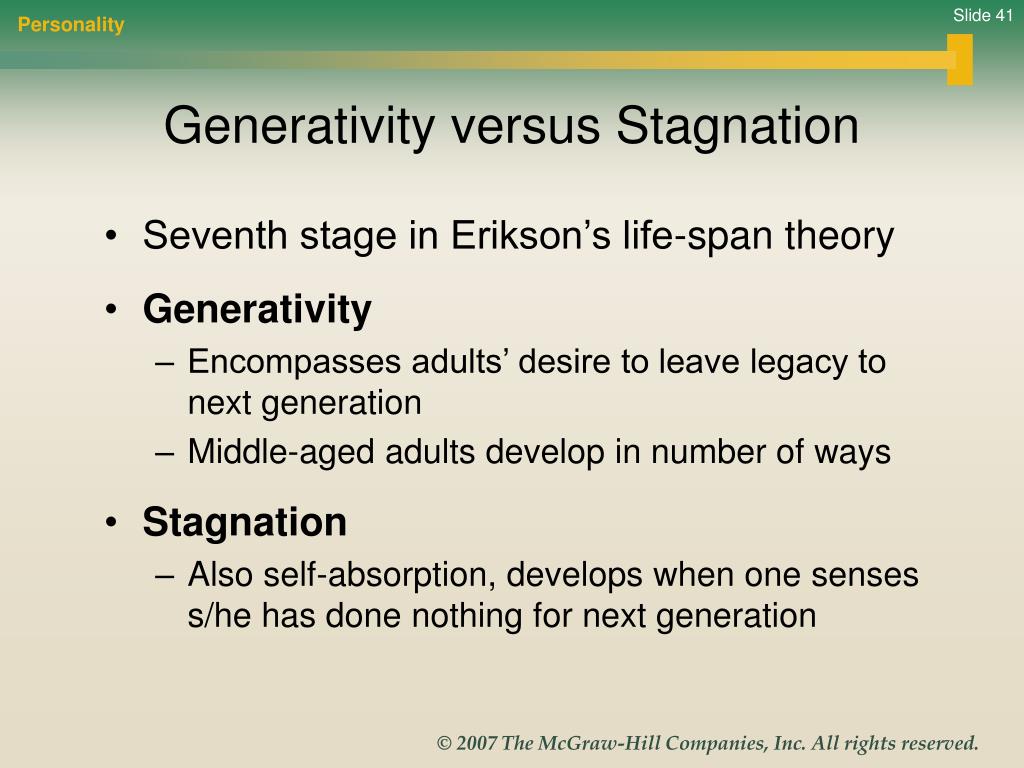
PPT LIFESPAN DEVELOPMENT PowerPoint Presentation, free download ID
The seventh recovery stage, purpose versus passivity, parallels Erikson's generativity versus stagnation stage and involves finding a life strategy for living well with a psychiatric disability despite sometimes disabling symptoms. Individuals use their repertoire of coping skills learned throughout the recovery process and spend their energy.

PPT Erik Erikson and Life Cycle PowerPoint Presentation, free
The Wall of Stagnation In many ways, stagnation is the opposite of generativity. With stagnation, you don't consider the interests or needs of others. In fact, you might describe your actions as selfish. There is no concern for doing meaningful work or being productive.

Generativity vs Stagnation 10 Examples (Erikson 7th Stage) (2023)
This period of introspection is known as generativity vs. stagnation, the seventh stage of Erik Erikson's theory of psychosocial development. During this stage, individuals between the ages of 40 and 65 face the challenge of creating a meaningful impact on the world and future generations or risk feeling unfulfilled and stagnant.

Generativity vs. Stagnation YouTube
One broad category of developmental outcomes is generativity vs. stagnation. Erik Erikson developed the concept of generativity versus stagnation to describe the psychosocial development of middle adulthood. Between ages 40 and 65, this period is characterized by the conflict between generativity (nurturing the next generation) and stagnation.
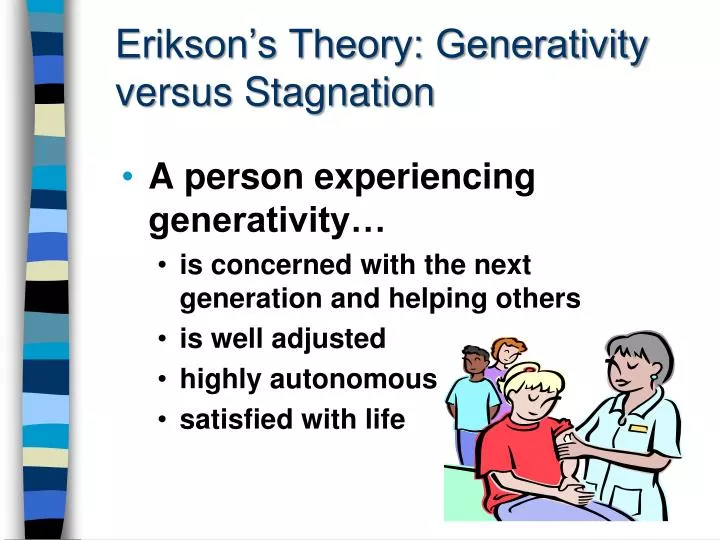
PPT Erikson’s Theory Generativity versus Stagnation PowerPoint
Generativity is psychologist Erik H. Erikson's term for the primary developmental task of the seventh stage of the life cycle - caring for and contributing to the life of the next generation. The developmental challenge of adults in their middle years is to be procreative, productive, and creative and to overcome a pervading mood of self.
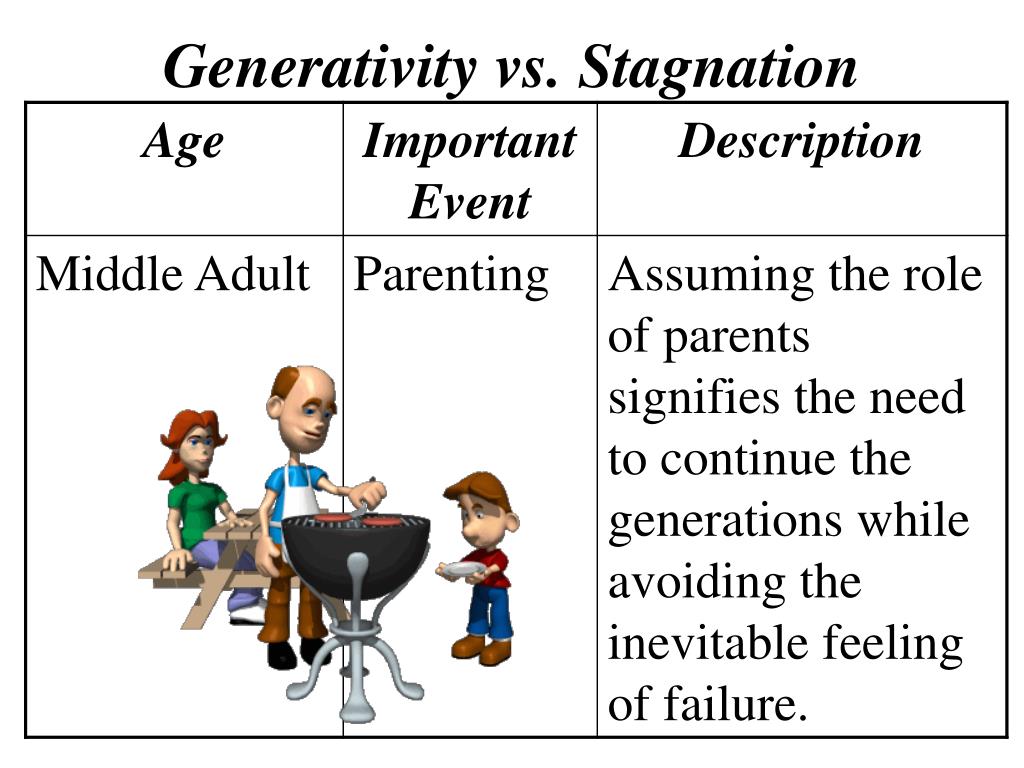
PPT Adolescence PowerPoint Presentation, free download ID5163308
"Generativity" refers to a sense of productivity, contribution, and positively impacting the world. It may involve nurturing and guiding the next generation, mentoring others, or contributing to society through meaningful work or community involvement. On the other hand, "stagnation" represents feeling stuck, unproductive, and lacking purpose.

Psychosocial development, Developmental theories, Emotional development
Go to: Abstract Erikson's (1950) model of adult psychosocial development outlines the significance of successful involvement within one's relationships, work, and community for healthy aging. He theorized that the consequences of not meeting developmental challenges included stagnation and emotional despair.
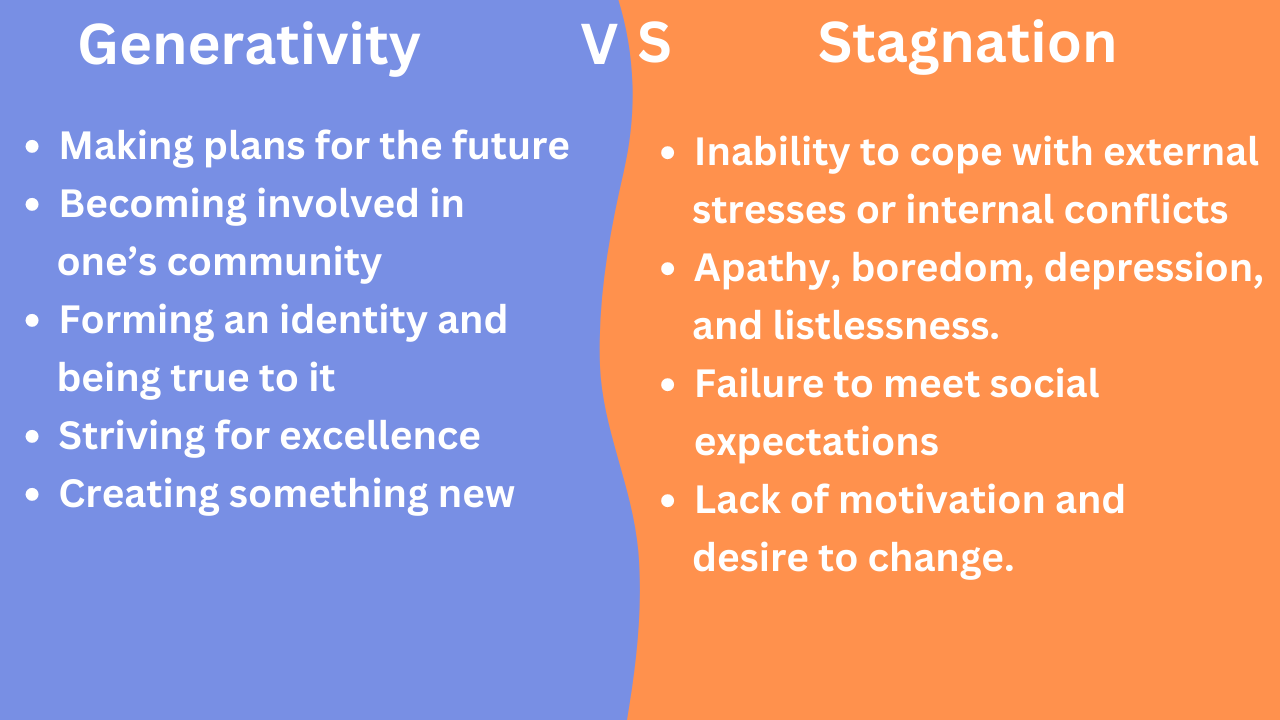
What’s Generativity Vs Stagnation? It’s A Step Closer To Your Goals
This page titled 8.12: Erikson- Generativity vs Stagnation is shared under a CC BY-NC-SA 3.0 license and was authored, remixed, and/or curated by Martha Lally and Suzanne Valentine-French via source content that was edited to the style and standards of the LibreTexts platform; a detailed edit history is available upon request.
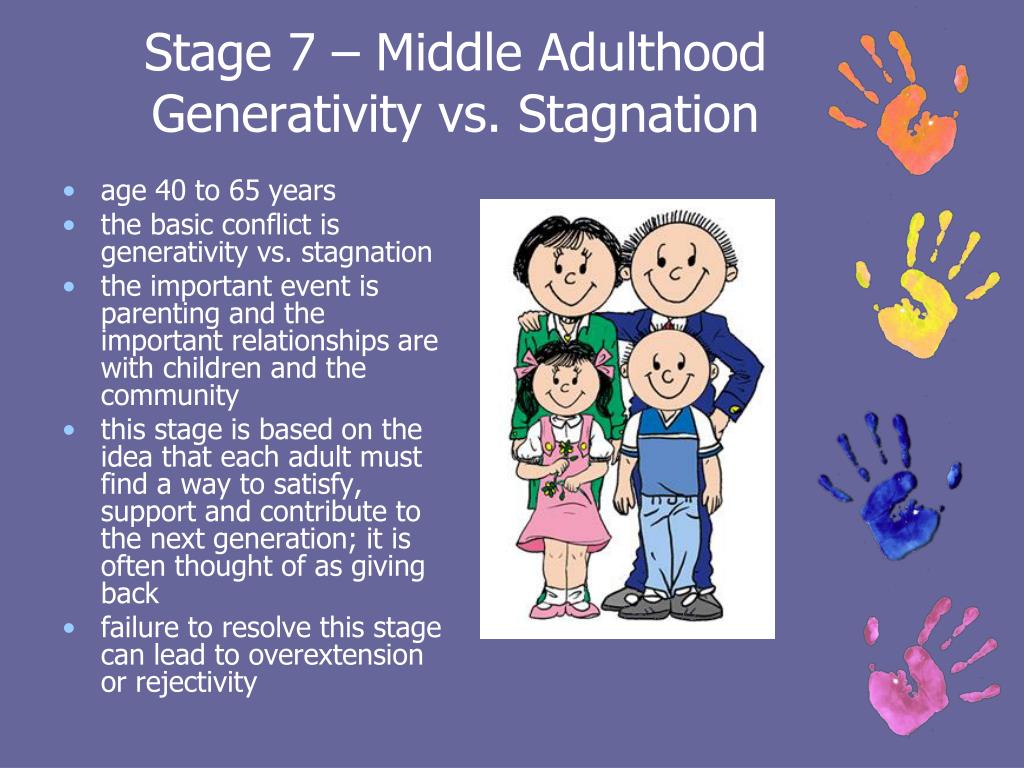
PPT Erik Erikson Psychosocial Development PowerPoint Presentation
The suggested agenda for future research promises to re-conceptualize midlife as a key period of life, with a concerted effort to focus on the diversity of midlife experiences in order to meet the unprecedented challenges and opportunities in the 2020s and beyond.
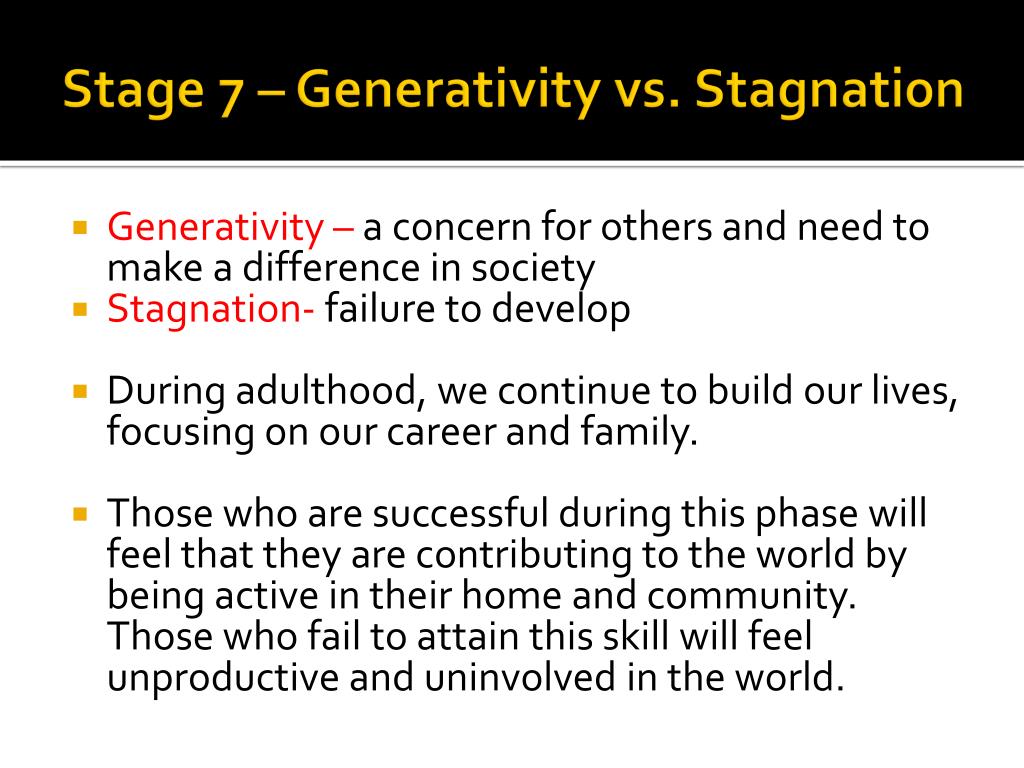
PPT Erikson’s 8 Stages of psychosocial development PowerPoint
In Erikson's view, generativity involves a desire to give back to society, whether through raising children, mentoring others, contributing to one's community, or pursuing a fulfilling career. On the other hand, stagnation is the sense of not making progress in life.

PPT Erik Erikson PowerPoint Presentation, free download ID2676858
Generativity vs Stagnation is stage 7 of Erikson's 8 stages of personality development and it goes from about 35-55 years, making this the longest stage in the psychosocial theory of personality development, and the primary drive in this stage is procreativity. Erikson defines Generativity as the syntonic quality of adulthood and according to.
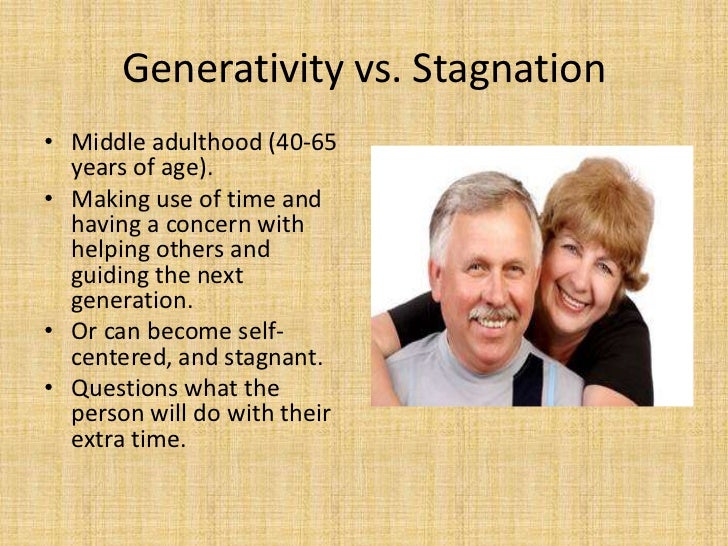
Erikson's Psychosocial Stages of Developmetn
Psychosocial Development Guide Erikson's Stages of Development A Closer Look at the Eight Psychosocial Stages By Kendra Cherry, MSEd Updated on August 03, 2022 Reviewed by David Susman, PhD Table of Contents View All Overview of Erikson's Stages of Development Trust vs. Mistrust Autonomy vs. Shame and Doubt Initiative vs. Guilt

PPT Erikson's theory Psychosocial Theory of Development PowerPoint
Generativity Versus Stagnation: An Elaboration of Erikson's Adult Stage of Human Development Authors: Charles L. Slater California State University, Long Beach Abstract Erik Erikson's theory of.